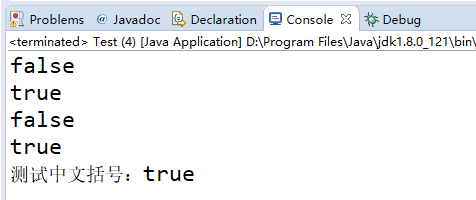题目一:
输入括号对数,输出所有的合法组合,比如输入1,输出"()",输入3,输出"()()(), (()()), ()(()), (())(), ((()))"。
思路:比如输入1,输出"()",那么输入2的话,我们就可以在输入1的基础上往左插入一对括号,往右插入一对括号以及把它用括号包含起来。这样的话左边和右边是相同的,我们可以用set集合来去除重复。画个示意图如下:

代码:
1 import java.util.HashSet; 2 import java.util.Set; 3 4 public class 合法括号 { 5 6 public static void main(String[] args) { 7 Set<String> parenthesis = parenthesis(3); 8 System.out.println(parenthesis); 9 System.out.println("=============================="); 10 parenthesis = parenthesis1(3); 11 System.out.println(parenthesis); 12 } 13 14 /* 逐步生成之递归解法 */ 15 public static Set<String> parenthesis(int n) { 16 Set<String> s_n = new HashSet<>(); 17 if (n == 1) { 18 s_n.add("()"); 19 return s_n; 20 } 21 Set<String> s_n_1 = parenthesis(n - 1); 22 for (String eOfN_1 : s_n_1) { 23 s_n.add("()" + eOfN_1); 24 s_n.add(eOfN_1 + "()"); 25 s_n.add("(" + eOfN_1 + ")"); 26 } 27 return s_n; 28 } 29 30 /* 迭代形式 */ 31 public static Set<String> parenthesis1(int n) { 32 Set<String> res = new HashSet<>(); // 保存上次迭代的状态 33 res.add("()"); 34 if (n == 1) { 35 return res; 36 } 37 for (int i = 2; i <= n; i++) { 38 Set<String> res_new = new HashSet<>(); 39 40 for (String e : res) { 41 res_new.add(e + "()"); 42 res_new.add("()" + e); 43 res_new.add("(" + e + ")"); 44 } 45 res = res_new; 46 } 47 return res; 48 } 49 50 }
结果:

注意:这儿的递归思路有误,会漏算。当n=4时,"(())(())"这种情况就打印不出来,不过上面的代码也算是给我们提供了一种递归的思路。下面写出正确的递归思路:
解题思路:括号对的合法序列,已经插入的左括号的数目大于等于右括号的数目。
(1)插入左括号:剩余的括号中,还有左括号;
(2)插入右括号:剩余的括号中,右括号的数目大于左括号的数目;
代码及其结果:
1 public class 合法括号_1 { 2 public static void printPar(int l, int r, char[] str, int count) { 3 if (l < 0 || r < l) 4 return; 5 if (l == 0 && r == 0) { 6 System.out.println(str); 7 } else { 8 if (l > 0) { 9 str[count] = '('; 10 printPar(l - 1, r, str, count + 1); 11 } 12 if (r > l) { 13 str[count] = ')'; 14 printPar(l, r - 1, str, count + 1); 15 } 16 } 17 18 } 19 20 public static void main(String[] args) { 21 int count = 4; 22 char str[] = new char[count * 2]; 23 printPar(count, count, str, 0); 24 } 25 } 26 27 //结果 28 /* 29 (((()))) 30 ((()())) 31 ((())()) 32 ((()))() 33 (()(())) 34 (()()()) 35 (()())() 36 (())(()) 37 (())()() 38 ()((())) 39 ()(()()) 40 ()(())() 41 ()()(()) 42 ()()()() 43 */
题目二:
判断一个括号字符串是否合法。
思路:直接看代码即可,很容易懂,这里要注意一下中文括号和英文括号是不同的。
代码:
1 public class Test { 2 3 public static void main(String[] args) { 4 System.out.println(chkParenthsis("()a()", 5)); 5 System.out.println(chkParenthsis("()()", 4)); 6 System.out.println(chkParenthsis(")())", 4)); 7 System.out.println(chkParenthsis("(())", 4)); 8 System.out.println("测试中文括号:"+chkParenthsis("()()", 4)); 9 } 10 11 /** 12 * 检查括号字符串是否合法 13 * @param A 源串 14 * @param n 源串长度 15 * @return 16 */ 17 public static boolean chkParenthsis(String A,int n){ 18 if(n%2!=0){ 19 return false; 20 } 21 int count = 0; 22 for (int i = 0; i < A.length(); i++) { 23 if (A.charAt(i) == '('||A.charAt(i) == '(') { // 避免中文括号 24 count++; 25 } else if (A.charAt(i) == ')'||A.charAt(i) == ')') { 26 count--; 27 } else 28 return false; 29 if (count < 0) 30 return false; 31 } 32 return true; 33 } 34 }
结果:
